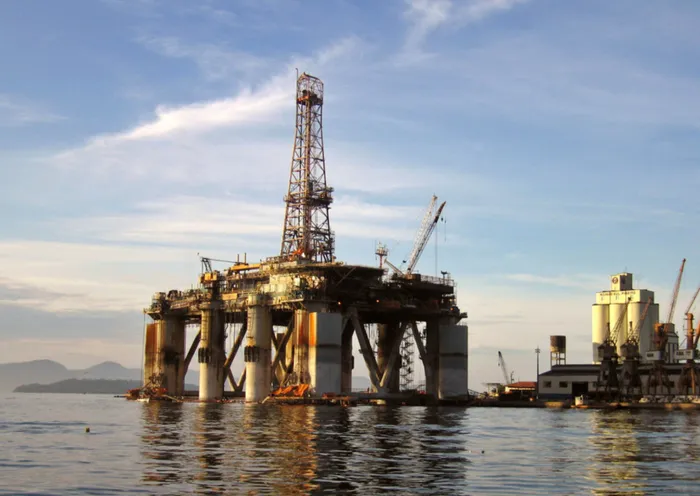Oil forecasters play snakes, ladders

An oil rig is shown in this file photo. An oil rig is shown in this file photo.
With just a few days to go, researchers from Barclays and Deutsche Bank have emerged as the most accurate oil price forecasters in the first half of 2012, seizing the crown from 2011 champions Goldman Sachs, based on Brent prices since the start of January.
Back in December, Barclays and Deutsche were among the most bullish forecasters, predicting front-month Brent futures prices would average $115 per barrel in 2012, up from $111, and well above the mean forecast of $105.
Only 5 of the 32 forecasters in the December oil poll had higher predictions, led by Goldman's influential research team, which had Brent averaging $120 this year.
The first three months of the year clearly vindicated the bulls. Brent surged from $107 at the end of 2011 to top out at $126 on March 13, with average prices peaking at nearly $119 per barrel in the middle of April.
The subsequent price plunge has led to a dramatic reversal in fortunes. With prices now trading around $90, the average for the year is dropping 20 cents a day. Barclays and Deutsche have overtaken Goldman as the most accurate forecasters, and are themselves about to be overtaken by JPMorgan in the next few days.
But their success may be short-lived. If prices stabilise around current levels, and that is a big if, but consistent with efficient markets theory, the annual average will drop to a little over $100 per barrel by the end of the year.
The top forecasters would then be a group of centrists and moderate bears led by Commerzbank, Credit Suisse, DNB, National Australia Bank, Prestige Economics, Raymond James, Santander, and UBS, all of whom forecast average prices between $100 and $105 this year, just below the average for all analysts in the survey.
FORECASTS AND NOWCASTS
Performance rankings are based on price predictions issued at the end of last year, included in the Reuters poll published on December 21, 2011. The poll was the last out-of-sample set of predictions for 2012 and so is the best test of forecast accuracy.
In a cruel irony, few of the forecasters currently on track to win the 2012 crown have those predictions any more.
The surge in Brent between January and March caused most analysts to revise their predictions upwards, partly as a matter of simple arithmetic and partly because a sharp price decline as a result of a slowing economy no longer seemed as likely as it had done at the end of last year.
The average price forecast surged from $105 in the December poll to $115 in the May version. The next poll is due to be published later this week.
Bearish forecasters made some of the biggest revisions. The eight forecasters with predictions of $100-105 in December had raised their average forecast by $12.83 per barrel to $115.96 by the time of the May poll.
Not only have the upward revisions by these eight forecasters been greater than other analysts in the survey (who increased their predictions by just $9.12 on average), but the forecasters in this group now have an average forecast slightly higher than everyone else.
It seems that formerly bearish forecasters have over-compensated for their previous error by raising their forecasts more than everyone else, and swinging from more bearish than average to more bullish.
By May, only Santander had maintained a mildly bearish forecast of $104.7, up from the $100 predicted in December.
In contrast, UBS had boosted its prediction from $100 to $112, Prestige was up from $103 to $122.8, and Credit Suisse was up from $105 to $125 - making it the most bullish forecaster in the survey alongside Citigroup.
Extreme volatility in published forecasts highlights the pressure on analysts from sales teams and clients to track short-term price movements and not stray too far away from either current prices or the market consensus.
As a result, most forecasts are really nowcasts rather than predictions, reacting rather than anticipating to price changes.
In contrast, Goldman has tended to publish a forecast and stick with it, heeding Lady Macbeth's admonition to “screw your courage to the sticking place”. The bank's boldness and tenacity (it published by far the most bullish prediction in 2011 and again this year) paid off handsomely last year, though its prospects look more uncertain in 2012 unless crude prices soar in the remaining six months.
FORWARD PRICE VISIBILITY
One aspect of the so-called “financialisation” of commodities has been the more forward-looking behaviour of oil and other raw materials prices. The average maturity of futures contracts has increased as hedge funds and other investors have taken positions in longer-dated contracts to express a longer term view - often on the “super-cycle”.
Price prognostications have also been getting more long-term (partly leading and partly responding to demand from clients).
For some observers, the increasingly forward-looking nature of the market is a sign it is becoming more efficient, pricing in more contingencies, and therefore dampening realised volatility.
But the wild swings in prices (macro volatility, not micro volatility) and predictions suggest it may also be reacting to shadows. Like the bond market, which famously predicts more recessions than actually occur, oil prices and forecasts may be over-responding to the threat of sharp supply and demand changes.
Arguments about market efficiency - fundamentals versus speculative bubbles - will not be resolved any time soon.
Whether or not the market is becoming more efficient, however, it does appear that the forward visibility captured in both prices and forecasts remains limited to a few months rather than a year, much less than several years ahead.
For all the hubris among investors and commentators about being able to predict prices 12 months or even 5 years ahead, the market and analysts seem trapped in an endless short-term stretching at most six months forward, with little visibility beyond. - Reuters